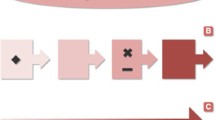Summary
The study of social insects has proceeded without adequate descriptive data on social insect attributes. The term “sociometry” is proposed for the collection and analysis of the physical and numerical attributes of social insect colonies and their inhabitants. Sociometry can be seen as having 3 levels — the compilation of data, the distribution patterns of the attributes among species (comparative studies), and the detection of relationships of the attributes to each other. Many sociometric attributes may be linked, hence evolve under constraint from other attributes. The study of social insects would benefit greatly through the organized collection of sociometric data.
Similar content being viewed by others
References
Davidson, D. W., 1977. Species diversity and community organization in desert seed-eating ants.Ecol 58:711–724.
Franks, N. R. and P. J. Norris, 1987.Constraints on the division of labour in ants: D'Arcy Thompson's cartesian transformations applied to worker polymorphism. In:Behaviour in Social Insects (J. M. Pasteels, J.-L. Deneubourg, Eds.), Exp. Suppl. Vol. 54, Birkhäuser Verlag, Basel, pp. 253–270.
Hölldobler, B. and C. J. Lumsden, 1980. Territorial strategies in ants.Science 210:732–739.
Hölldobler, B. and E. O. Wilson, 1979. The number of queens: an important trait in ant evolution.Naturwiss. 64:8–15.
Huxley, J., 1932.Problems of Relative Growth, Dover.
Oster, G. and E. O. Wilson, 1978.Caste and Ecology in the Social Insects, Princeton Univ., Princeton, NJ, USA.
Peters, R. H., 1983.The Ecological Implications of Body Size, Cambridge Univ. Press.
Tschinkel, W. R., 1988a. Social control of egg-laying rate in queens of the fire ant,Solenopsis invicta.Physiol. Entomol. 13:327–350.
Tschinkel, W. R., 1988b. Relationship between ovariole number and spermathecal sperm count in ant queens: a new allometry.Ann. Entomol. Soc. Amer. 80:208–211.
Wilson, E. O., 1971.The Insect Societies. Belknap/Harvard Univ. Press., Cambridge, MA.
Author information
Authors and Affiliations
Rights and permissions
About this article
Cite this article
Tschinkel, W.R. Insect sociometry, a field in search of data. Ins. Soc 38, 77–82 (1991). https://doi.org/10.1007/BF01242715
Received:
Accepted:
Issue Date:
DOI: https://doi.org/10.1007/BF01242715




